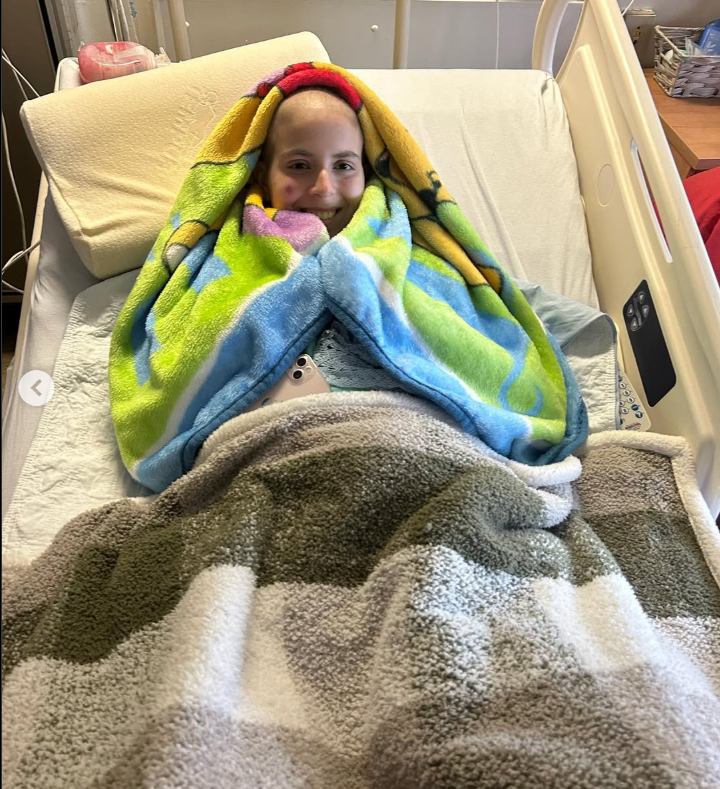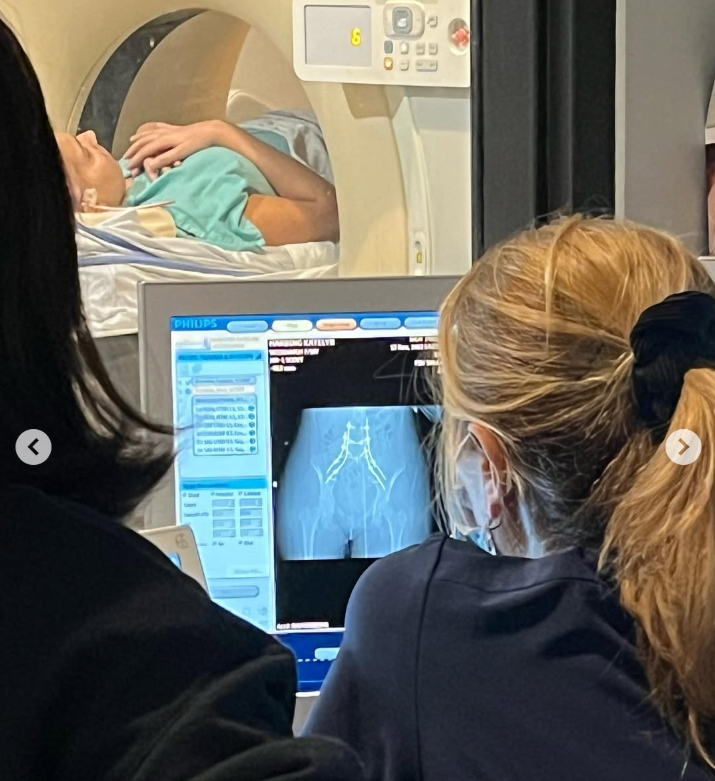
Two Sisters Who Lost Their Mother to Cancer Found Out 11 Years Later They Would Have to Fight for Their Lives Too – Their Story
They had already buried their mother. Eleven years later, a pair of devastating diagnoses forced two sisters to face the same disease and the inherited mutation that had been waiting all along.
When cancer takes a parent, the impact stretches far beyond grief. For one family, it marked the beginning of a long, unforeseen journey that would resurface more than a decade later with even more devastating consequences. What started as a childhood loss quietly evolved into a life-altering genetic legacy.
Eleven years after losing their mother to breast cancer, two sisters found themselves confronting a rare and aggressive diagnosis of their own. Within months of each other, they were thrust into intensive treatment, life-changing surgeries, and a future filled with medical uncertainty.
A Mother's Death and the Start of a Lifelong Battle
When Devorah Sorger died of breast cancer in 2012, her daughters, Cassandra and Katelyn Harding, were still in elementary school. After her passing, their father, Christopher Harding, became their sole caregiver, raising the two girls on his own.
The family remained close. For years, they lived with the loss as part of their past until more than a decade later, when that history began to repeat itself in a far more immediate way.
In July 2022, Cassandra, known to her family and friends as Cassie, was diagnosed with osteosarcoma, a type of bone cancer. The tumor was first identified in her knee, but by the time of diagnosis, it had already spread to her femur and tibia. Her case required urgent treatment, and her care team moved quickly to contain the disease.
Cassandra underwent surgery to remove the affected bones. Her knee, femur, and tibia were replaced with prosthetic metal components. She then began a 40-week chemotherapy regimen, which she completed in May 2023. Since then, she has continued with rehabilitation and regular medical exams to monitor for signs of recurrence.
In June 2023, less than a month after Cassandra completed chemotherapy, 18-year-old Katelyn, known as Katie, was diagnosed with osteosarcoma. Unlike her sister's case, Katelyn's cancer was located in the pelvis, tailbone, and lower spine. The location and extent of the tumor made her condition more complex, requiring a longer treatment timeline and a series of major surgical interventions.
Katelyn began her own 40-week chemotherapy protocol in August 2023. Her team scheduled a highly specialized surgery for October 31 of that year. The operation lasted 40 hours and involved the complete removal of her sacrum and pelvic tumor. Both fibulas were extracted for use in reconstruction, and multiple nerves were disconnected in the process.
Metal rods were inserted along her spine to stabilize the area. The consequences of the surgery were life-altering. Katelyn remained hospitalized at Montreal General Hospital for approximately two months, followed by another three months in a rehabilitation center to begin adjusting to the physical and functional changes.
As both sisters continued treatment, questions about the disease itself and how it had struck the family twice in such a short time became impossible to ignore.
Osteosarcoma: What They Were Fighting
Osteosarcoma is a rare but serious cancer that starts in the cells that form new bone. It is the most common type of bone cancer, though it accounts for only about 1,000 new cases each year in the United States. It most often affects children, teenagers, and young adults, and occurs slightly more frequently in males.
The cancer usually begins in the ends of long bones, especially around the knee, such as the femur, tibia, or upper arm bone. However, it can develop in any bone in the body, including the pelvis, spine, shoulder, or skull. In both Cassandra's and Katelyn's cases, osteosarcoma developed in high-risk areas: Cassandra's in the knee, femur, and tibia, and Katelyn's in the pelvis, sacrum, and spine.
Osteosarcoma forms when normal bone cells called osteoblasts undergo abnormal changes that cause them to grow uncontrollably. These cells form cancerous bone tissue that is weaker than healthy bone. As the tumor grows, it can invade surrounding structures like muscles and tendons.
In some cases, the cancer spreads to other parts of the body through the bloodstream, a process known as metastasis. The lungs are the most common site of metastatic spread. The exact cause of osteosarcoma is not fully understood. It is believed to be triggered by DNA changes, or mutations, within the bone cells.
These mutations can be acquired over time or inherited genetically. This distinction would later become important in the Harding family's case. Symptoms of osteosarcoma can vary, but the most common include persistent pain in the affected bone or joint, which typically worsens over time.

Cassie Harding, dated November 8, 2023 | Source: Instagram/hardingsisters45
Other signs may include swelling, stiffness, or a noticeable lump at the site. Pain often increases with physical activity or lifting, and in some cases, a bone may fracture without a clear cause. Limping or decreased range of motion in a limb may also occur.
Because many of these symptoms overlap with more common conditions, such as sports injuries or joint problems, diagnosis can sometimes be delayed. By the time both sisters were diagnosed, their tumors had already progressed significantly.

Cassie and Katelyn Harding, from a post dated November 8, 2023 | Source: Instagram/hardingsisters45
A Rare Genetic Link: The TP53 Mutation
Due to the unusual circumstances of both sisters being diagnosed with osteosarcoma within months of each other, the Harding family was referred to a genetics department for further testing. Doctors suspected a possible hereditary cause, and multiple genetic screenings were conducted to identify any underlying mutation that could explain the pattern.
The results confirmed that both Cassandra and Katelyn carried a rare mutation in the TP53 gene. This gene plays a critical role in regulating cell growth and preventing tumors. When functioning properly, TP53 helps suppress abnormal cell division. However, mutations in this gene impair that function, significantly increasing the risk of developing various forms of cancer.
The TP53 mutation is associated with a hereditary cancer condition known as Li-Fraumeni syndrome. Individuals with this mutation are at high risk of developing cancers in the bones, brain, breast, and other tissues, often at a young age. The discovery helped explain why both sisters developed the same rare cancer just over a decade after their mother, Devorah Sorger, died of breast cancer.
Because the mutation is inherited, its impact extends beyond the initial diagnosis. Both sisters would require cancer screenings every three months for the rest of their lives to detect new tumors before they can grow or spread. Preventive surgeries were also being considered. In time, both girls were expected to undergo double mastectomies due to their elevated breast cancer risk.
In addition to the emotional and medical toll, the genetic findings brought other lasting implications. Neither sister would be able to have biological children, as the TP53 mutation is hereditary and could be passed on.
The diagnosis reshaped not only their health outlook but their long-term plans for the future. The discovery of the mutation provided clarity, but it also confirmed that the family's battle with cancer was far from over.

Katelyn Harding as seen in a post dated November 25, 2023 | Source: Instagram/hardingsisters45
Life After Diagnosis: The Impact on the Harding Family
The diagnoses of both daughters placed the Harding family under prolonged physical, emotional, and financial strain. Cassandra and Katelyn's father, Christopher, had already taken time off work when Cassandra began her treatment in 2022. With Katelyn's diagnosis following in mid-2023, his absence from employment was extended indefinitely.
Managing back-to-back rounds of treatment and rehabilitation meant the family was operating under constant pressure. In addition to medical costs, the family had to begin preparing for changes to daily life at home, particularly in response to Katelyn's post-surgical needs.

Katelyn Harding undergoing a diagnostic scan, as seen in a post dated November 25, 2023 | Source: Instagram/hardingsisters45
Her procedures resulted in permanent physical limitations, including the use of leg braces and a lifetime requirement for both a colostomy and a urostomy bag. To accommodate her recovery and mobility, the family needed to make home modifications and secure specialized equipment.
A fundraising page was launched to help ease the financial burden. But even with a growing network of support, the family's challenges remained immediate and long-term, rooted in a reality that changed drastically in less than two years.
Saying Goodbye: Katelyn's Passing
On July 24, 2025, the Harding family shared devastating news. Katelyn died at the age of 20 after a two-year battle with osteosarcoma. Her passing was announced in a memorial post on the sisters' shared Instagram page.
In the post, the family expressed their deep grief, writing, "Katie Bug has left us peacefully surrounded by her closest of family." They described her as someone who "touched countless hearts and brought a smile with everyone she met." The message also noted that she was "not alone," adding that she had joined her mother, Devorah.
Katelyn's death marked another devastating loss for the Harding family. After enduring the long months of treatment, surgery, and rehabilitation, her absence leaves a space that cannot be filled. The family's gratitude was clear in their message to those who had supported them.
The information in this article is not intended or implied to be a substitute for professional medical advice, diagnosis or treatment. All content, including text, and images contained on news.AmoMama.com, or available through news.AmoMama.com is for general information purposes only. news.AmoMama.com does not take responsibility for any action taken as a result of reading this article. Before undertaking any course of treatment please consult with your healthcare provider.

